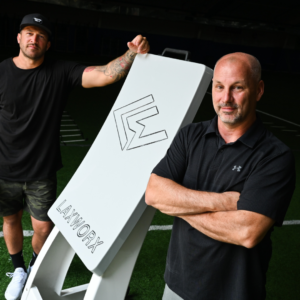The Covid-19 outbreak wreaked havoc on the commercial sector, forcing several enterprises to close or file for bankruptcy. Thankfully, some people made it out alive and even stronger. Many business owners quickly adapted to the pandemic situation by converting to a digital office. Some pivot only to improve the corporate culture and flexible working paradigm, while others offer any new product line.
In this series of interviews, we spoke with 20 business owners and leaders in the United States to see how the epidemic prompted them to pivot and adapt to new market conditions.
INTERVIEW HOST
The host of this interview was Jed Morley. Jed Morley is the CEO of a leading payment processing service provider called PlatPay.

Table of Contents
The question we asked:
The pandemic encouraged many businesses to pivot and adapt to changing market conditions. How did you adapt? Did you introduce additional product lines or services?

Paul Moody

Logan Mallory
The biggest challenge we faced was ensuring that we retained employees during times of change and uncertainty.
The way that we did this was by doubling down on the employee experience and employee engagement. With the Great Resignation looming, ensuring employees are happy and engaged is the secret to helping a business thrive by keeping turnover rates low and morale high.
A company’s performance overall can be tied back to one factor – and that’s employee engagement, for better or for worse. Increased employee engagement leads to happier employees, which in turn leads to a better customer experience, which means that we have happier customers as well, and happy customers remain loyal and become long-term clients.

Mark Pierce
The biggest challenge we faced was constantly evolving market conditions. We pivoted to adapt to the changing market conditions by re-focusing our efforts on services geared towards entrepreneurs.
We’ve seen an increase in entrepreneurship driven by the Great Resignation, so we’re more actively promoting our business formation services, and added a more robust offering geared towards entrepreneurs.

Tom Schaefer
I would say the greatest unexpected challenge is exactly that: dealing with the unexpected. In business, you can very easily fall into a mode of doing business as usual, where you expect the jobs and orders to come in just as they always have.
You get comfortable to the point that you can’t imagine the work not being there. It seems like a safe assumption until something like COVID comes along to disrupt that. The warning to new entrepreneurs would be to avoid being one-dimensional. Be able to work in multiple business sectors and keep a good variety of companies or products that you do business with.
If a certain area or sector has a lull or even completely disappears, have a contingency plan where you can swing your efforts into other areas.

Thomas Samuels
As a full-service trade show and exhibition company, we provide exhibit rentals and management services to a large number of clients all over the country. When the pandemic began, we had to quickly adapt to protect our clients, their customers, and their livelihoods by offering high-quality personal protective equipment (PPE) for our display booths and demo stations.
With venues having to adjust their events and safety precautions—sometimes without much notice—it was also important for us to ensure fast turnaround times for these new products in small and large quantities alike. We began to offer protective additions such as sanitizing stations, sneeze guards, and clear barriers, all of which help to keep our clients (and their employees) safe. Additionally, we began to print custom face masks and floor decals, incorporating our clients’ logos and branding into their public health protocols.
To account for the uptick in open air trade shows, we began to offer new outdoor curbside signs and flags, hanging banners, and weather-resistant tents, ensuring that our clients’ outdoor exhibits are just as impressive as their indoor booths. These new signs, displays, and safety products encourage social distance and physical separation, keeping customers protected and ensuring that trade shows can continue safely.

Brian Nagele
One of the most challenging tasks I faced as an upcoming digital marketer was staying relevant. Technology has infiltrated nearly every industry, and it’s accelerated the fluidity of customer behavior.
Print ads worked well for specific demographics, but they were no longer a leading tactic for marketers by the 2020s. Being an entrepreneur pushes you to be creative and always think one step ahead of your competitors.
Ultimately, my team spent countless hours not only strategizing for existing marketing clients but looking for new ways to keep scouting prospects for our startups in such a face-paced landscape.
That dry spell taught me that if I wanted to expand my client base, I’d have to meet people at their level and develop the agility to maintain their attention. Through humanized marketing – curating a social media presence and engaging within niche consumer groups – I was able to scale multiple businesses to multi-figure brands that sold for their value. If you’re looking to be a successful marketer, you have to run at the pace of your audience (or faster).

Stephen Light
A mission statement is why you start a business in the first place and is what keeps you energized and passionate. What I didn’t expect was how easily the myriad of moving parts involved in starting and running a business can get in the way of that initial spark, and how much work goes into continually recommitting and reminding yourself of why you began.
Entrepreneurs wear a million different hats and make a thousand decisions a day, and it can really bog you down. Continually recommitting to your mission is difficult but necessary, and entirely worth it. Schedule a specific time with your team to regularly reassess your mission statement and to take stock of anything that doesn’t align.

Scott Spivack
For instance, we’ve added an ‘Accessibility Adjustments’ feature on our website that adjusts the interface as per the user preferences. As a medical financing company, we get customers facing all kinds of health problems and physical disabilities.
With this feature, we were able to smoothen their experience. Here’s how it works: If a particular user selects ‘Seizure Safe Profile’, our website automatically eliminates flashes and reduces color. Similarly, if someone selects ‘Cognitive Disability Profile’, our website assists with reading and focusing. This has helped us earn the trust of users and build loyalty during the challenging times of the pandemic.

Marliis Reinkort
The greatest challenge that has faced my business so far, was definitely Covid-19, and as we know now, changed the world for everyone. I’m the CEO of Code Galaxy, which offers online coding courses to kids of all ages.
We teach kids coding, design and other technology subjects and skills in a virtual classroom. However, before the pandemic started in March 2020, we were a fully in-person coding school, about to open up a new location in Austin, Texas. Once the pandemic started, we were forced to close our in-person locations for an unknown amount of time, so we decided to make a pivot and transfer our business from in person to fully online.
Since our curriculum was already online and we had a good amount of courses available for kids, the transition ended up being easier than we initially expected. We had to create online scheduling systems, find a virtual classroom platform to run the classes, retrain our teachers and completely change our marketing strategy.
It was definitely a challenge but now that we have fully made the switch, we are actually very grateful that we were forced to pivot the business model, since now we get to work with students all over the world as well as with schools across the U.S. to provide their coding electives and after school programs. It’s a more accessible, flexible and financially viable business model.
Learning from this experience, what I would like to warn all entrepreneurs about is that never get too comfortable with your current business model and always look for new trends and options to diversify your business. And once the change has to be made, in a situation like the pandemic was, even if you’re not ready, be open-minded and try to find solutions that can turn around your business quickly. Don’t wait and just start testing and experimenting to find out what works. The more you try, the higher your chances of success.

Ryan Reed
CHALLENGE 1
The home improvement sector is currently experiencing the most severe labor shortage in its history. Failure to break the labor code will stifle growth, profit, and cash flow. Some businesses can perish due to their incapacity to deal with the issue.
The second option is to “survive” rather than “thrive,” with an insufficient profit to compensate for the risk and work necessary to produce a little net pre-tax profit. As a result, many businesses are sacrificing potential earnings to develop and strengthen their businesses while also providing stability for themselves and their families.
CHALLENGE 2
Advertising, the web, exhibitions, events, and self-developed leads, such as canvassing, have all seen an increase in lead development costs. This, along with backlog and cash flow issues, reduces profitability and restricts expansion.
It’s vital to have a well-thought-out strategy for dealing with these challenges. It also needs to be consistent with a plan to make your company stable and capable of weathering unanticipated changes, which can come from a variety of sources: a lack of financing, changes in the current economy, high turnover, the cost or effectiveness of the lead generation sources you use, and so on.
CHALLENGE 3
The expense of acquiring, training, and sustaining employees rises for small businesses. The ease of finding a job due to Great Resignation, especially for persons with mediocre talents or bad experience, results in high turnover, borderline mediocrity, and increased personnel expenditures.
These three challenges can become quicksand for small, closely-held businesses. This nation’s expanding economy, consumer confidence, and disposable income produce a two-edged sword: the sparkle of higher revenue clouds judgment and lessens the caution required in concerns such as staffing shortages, mis-hires, and mishandled staff.
OVERCOMING CHALLENGE 1
To overcome challenge 1, you need to train your labor. You need a highly efficient training mechanism to train your workforce effectively. You may have to cut back on potential profit in order to retain your skilled workforce as it will be beneficial for you in long run.
OVERCOMING CHALLENGE 2
As the advertising cost has skyrocketed, you need to set aside a specific budget that should be solely used for marketing purposes. I know this will cut down significant portions of the profit but it will effectively generate many leads for your business and it’s a necessity for eventual growth and expansion of your business.
OVERCOMING CHALLENGE 3
Every business is suffering from a wave of great resignation. Coupled with challenge 1 you need to effectively manage your employees or it will put an end to your business. To tackle this provide your employees with good remuneration packages. Provide them with effective perks and benefits that are actually beneficial and provide value to your employees.

Sherrie High
One of the challenges about running a business is that you need to expect the unexpected! There will be unexpected expenses that you did not plan on for your business, slow periods where you may not get as much business as you thought you would, payment delays even supply increases.
Whatever it may be make sure you have the financial resources to keep your business afloat, a good budget plan which includes extra capital for these unexpected events.

Carolyn Barbarite
In business nothing ever goes exactly the way you had planned and as entrepreneurs you must be open-minded to change.
The most unexpected challenge that I faced with Javamelts Flavored Sugar is having to completely rebrand, reformulate and reintroduce Javamelts to the marketplace as a direct result of losing not only one manufacturing facility (co-packer) but the second one we had found.
This challenge, by far, was my most difficult because my original product was very labor-intensive to manufacture. I had to figure out a way, as fast as possible, to create a seamless, more efficient, better-for-you and packaged more conveniently product all at once. The trick for me was to PIVOT and not fight the situation. It was very important that I evaluate all of the pros and cons and go down the path of least resistance.
I simplified the ingredients, packaging and formulation to allow Javamelts to stay in the game. My advice to anyone who is faced with a tremendous problem or hurdle is not to resist the change that is inevitable. Gather the information, consult with a team of experts in that field as best as possible, ask for help and then make a sound, informative decision.
Most often than not the problem that you are having is meant for you so that you can learn so don’t be afraid to switch gears and prevail. The problems I had led me to creating better products, packaging and process overall.

Shira Truitt
Work/Life balance was my greatest, unexpected challenge with my business. After the newness of business wore off, no one wanted to hear about the business as much as I wanted to talk about it.
Moreover, I was spending extraordinary time working, but I was making extraordinary progress– and it was great! I was enjoying myself, my work, and my accomplishments.
I didn’t miss any of the big things, but my quality of life was diminished by the amount of work I was doing–even though I enjoyed it. I managed to overcome that by determining what, specifically, I would do if my business went as planned so that time and resources were not an issue. Then, I selected all the ideas that did not have a financial basis and that did not serve a dual purpose of helping me AND helping my business.
In that way, no change would be financially incentivized. Additionally, the changes that I choose to make would only impact me–not the business. I worked to implement those ideas by scheduling everything that was important to me and committed to keeping that schedule. That made time for things like a more meaningful prayer life, journaling, and exercise. I scheduled one night a month were work ends no later than 5:00 p.m. and I must do something I enjoy.
That lead to crafting, binge watching tv, and planning new opportunities. Additionally, I took classes at the local community college on everything from cooking to jewelry making and, even if I weren’t successful, I’d had a positive experience and raised the quality of my life for just those few hours.
That lead to meeting people with similar interests but from a different walk in life. I scheduled a monthly review of my activities so that I am intentional about maintaining this balance. The regimented nature of this decision took some time to get used to, but it has allowed me to be relevant in my community, meaningful time to reflect, a healthy lifestyle, and time to do the things I enjoy while my business continues to grow. As an entrepreneur, I could not ask for more.

Steve Silberberg
Marketing is a loathsome, never-ending Sisyphian task that not only drains my company’s finances at an unprecedented rate, but also drains my spirit and the amount of time I can devote to any and all other aspects of running my business.
It forces me to permanently assume the role of a repugnant, self-aggrandizing, narcissistic shyster in a desperate attempt at getting the fleeting attention of prospective clients through a dense fog of sales messages incessantly generated by unimaginably wealthy, over-capitalized business interests.

Devin Schumacher
The pandemic changes globally brought a new reality for the business and its own set of challenges. Pivoting during the pandemic is not just a concept for me but a reality we live with in the new normal of businesses.
Since our service is in digital marketing and transformation, I pivoted in this pandemic by onboarding new types of clients. I began developing campaigns for traditional companies that are new to digital marketing and diversifying our client base.

Alexa Allamano
Before the pandemic my answer would have been split between overcoming a store burglary and partnering with a flash-sale website that was a flop and left me with thousands of pieces of unsold inventory. However, the pandemic caused unexpected disruptions to my main sales channels – in-store retail, wholesale partnerships, and pop-up events.
My online sales had been the smallest growth area since establishing a storefront in 2014, but everything shifted to DTC during 2020. I shuttered my previous storefront and ended an unpleasant relationship with the lessor during covid lockdown, re-establishing in a new tiny storefront later that year.
Due to the size limit of the new space, I innovated Scan to Shop window shopping by merchandising my window display to be shoppable 24/7 with QR codes. Now my storefront drives business online and I am in-store by appointment (I also teach other store owners how to implement Scan to Shop).
Overcoming the disruption of a global pandemic requires flexibility, creative problem solving, and making hard choices on what best aligns with your business goals and values. Making those tough decisions centered around my ethics led my business to prosper in a way I couldn’t imagine before the pandemic. I gave up my dream store and created my dream life.

Kathleen Ahmmed
Speaking from personal experience, one of the biggest challenges that I faced at the start was overcoming the need to hire fast in order to fill empty positions in my business operations. This is because when you are first launching a business it can often feel like you are in a race with yourself to get things done and solve problems quickly.
However, when it comes to recruitment, this is a process that usually requires a lot of time and patience, because one wrong hire can often damage the reputation of your company by having a negative impact on employee morale, productivity, and collaboration, which ultimately leads to a toxic work culture.
And in my case, I was only able to see the effects of my hiring decisions much later in the startup process, as it was apparent that I failed to take into account other important factors like soft skills and cultural fit, with some of them either not meshing well with others, some lacking the necessary skills needed to communicate effectively with customers and others failing to collaborate with their team members in the field.
As such, I learned the importance of taking your time to do your due diligence and always hiring for intelligence, skills, and cultural fit first, because while it is easy to recruit people who are “good enough”, they can often end up being “detrimental” to your business progress down the road.

Ouriel Lemmel
The biggest challenge I faced when I started was that there was no model for my particular business. It was a new idea, and no one had really tried anything like an app to connect drivers with lawyers to help fight traffic tickets. So I did my research. I studied my market well and ensured my product is something people want and need.
Don’t stay in your own bubble. My partner is a very good check on that as we come from different backgrounds. I’m also fortunate to have great mentors, advisors, and friends that are super helpful. Most successful entrepreneurs I know didn’t wake up one morning and decide to become one, they’ve always had an entrepreneurial mindset. If you have a business idea or project, don’t be shy—try it.

Sam Cohen
The greatest, unexpected challenge was staying focused on business development. Sometimes the distractions are too heavy to resist. So I had to learn to manage my time properly. I will share how I did it and you can do the same too.
The solution is to reserve some time in your calendar for business development, and don’t let anything disturb you during those times. Also, you should try not to get too attached to any project because you will have to let go of all of them eventually.

Glen Bhimani
Marketing was my greatest initial and unexpected challenge.
Ultimately, it came down to an assumption I made. After spending years in the security industry as a guard, I realized most guards don’t care about the clients because they aren’t being taken care of by their employers.
That was when I started BPS Security. My company’s purpose is to provide a better security option at a lower price, so I developed an operations system that allows us to provide highly qualified guards who are well-paid so that they put their best effort into taking care of the customer. My assumption was that clients would find me because I had a website and was offering a better service at a lower price. That was a big mistake.
Because of that assumption, we spent several years without any clients at all: it’s a miracle we’re still standing. But when I finally realized we needed to work on our marketing and sales to actively let people know we are here, the business exploded! Even though it wasn’t all at once, it still exploded and today we’re one of the fastest growing security firms in the United States because of it.
I would love for new entrepreneurs to avoid my mistake: don’t assume people will come to you just because you’ve started your business. You need to find ways to actively attract clients.
Also, allow time for your marketing to kick in and begin working.
Our sales improved our clients drastically, but I had a business partner who would constantly argue for the first month that our marketing needed to be cut because it wasn’t bringing in new clients. I reminded him of exactly what I would tell new entrepreneurs: marketing isn’t a magic pill that works overnight.
Most of the time it doesn’t even begin to show serious results after two to four weeks. But marketing is a crucial part of building out your company’s reputation and improving your client base, and needs to be an essential part of your company at all times! Especially during difficult times.
These are a few of the very important things I learned and implemented that helped me overcome my marketing challenges:
Continue adjusting
The market is constantly changing, so you have to continually adjust as you go. One marketing campaign might not work super well, but another one might be incredibly effective. So keep trying different things and give them a few weeks to work before you cut them.
One of the ways we’ve developed such strong marketing is that we’ve continually revamped what we’re doing. Our website has changed multiple times in the last two years, and it has resulted in much higher leads and client acquisition every time we’ve changed it. So continually adjust your marketing and pursue what seems to work best after you’ve given it a few weeks to work.
Don’t expect immediate results
I know I mentioned this already, but understanding this is crucial. There are going to be marketing companies that tell you they can bring in hundreds of leads a month right from the start. They are frauds. Not because they can’t get leads, but because their leads are bad leads.
Good marketing requires time and effort, and as one of my mentors says, “great marketing has exponential growth.” Which means you might not see much right now, but it will grow and expand on itself if you keep at it diligently. Ours did, and now we’re getting regular news features and sometimes have more client requests than we have capacity to take on.
Be consistent
Marketing is a huge part of your reputation, so you need to make sure you have the same reputation everywhere. Your brand needs to be consistent, from your brochures, to your social media, to your website, to even how you answer the phone!
Building a consistent feel across every aspect of your company is a great way to work on your marketing, because it creates a more solid relationship between the company and the clients. If you look at your marketing assets and realize that your facebook page is completely different from your website, that’s a sign your marketing isn’t consistent and that your potential clients may not even know they’re looking at the same company.
Get feedback
Finally, getting feedback is one of the most important parts of marketing. Speak with your current clients to find out why they work with you and build that into your marketing. If you compete in the market on service or price alone, you’ll run yourself into the ground and won’t be able to compete with bigger companies. Find out what makes you unique and why your clients like working with you, then build your marketing on that feedback. When we began to do this, our marketing took a huge turn and began to show serious results.


